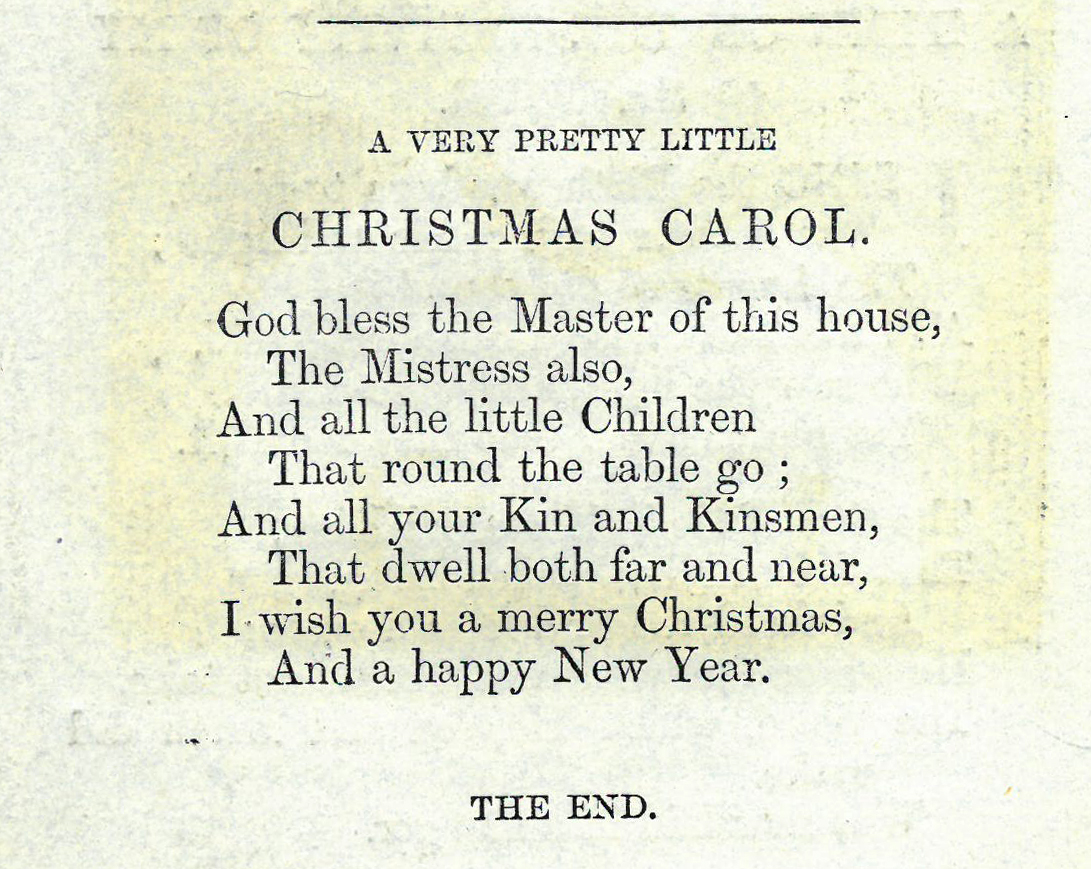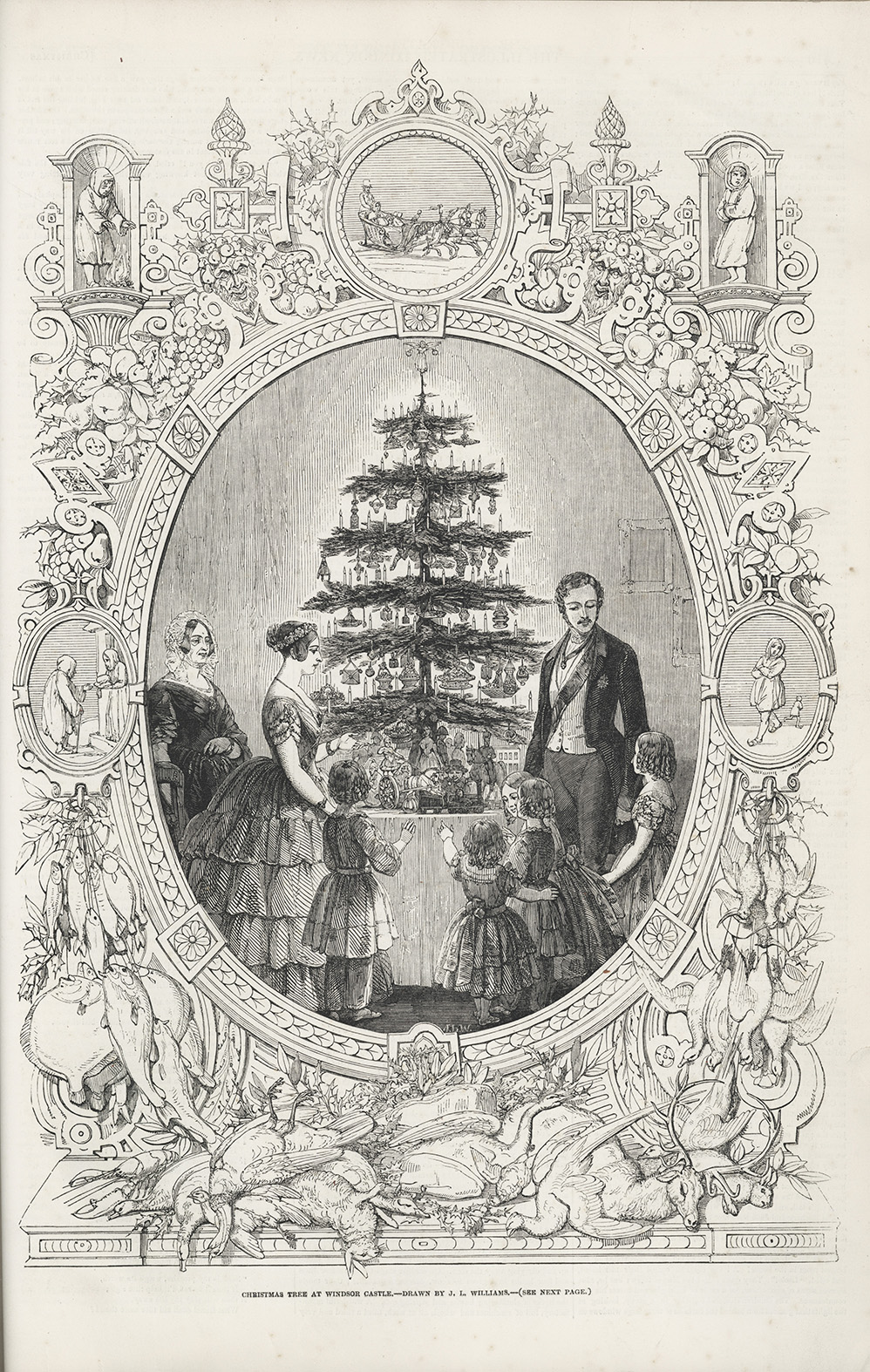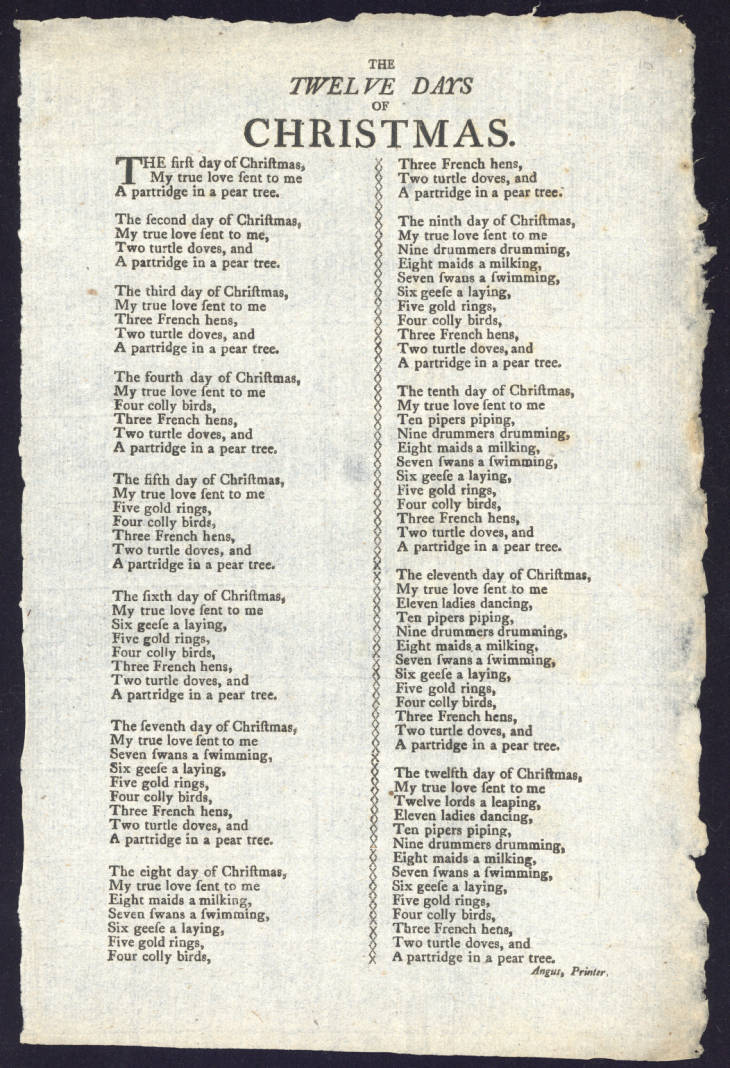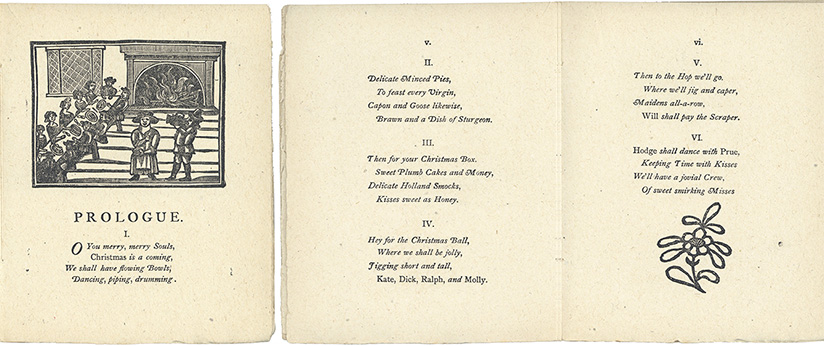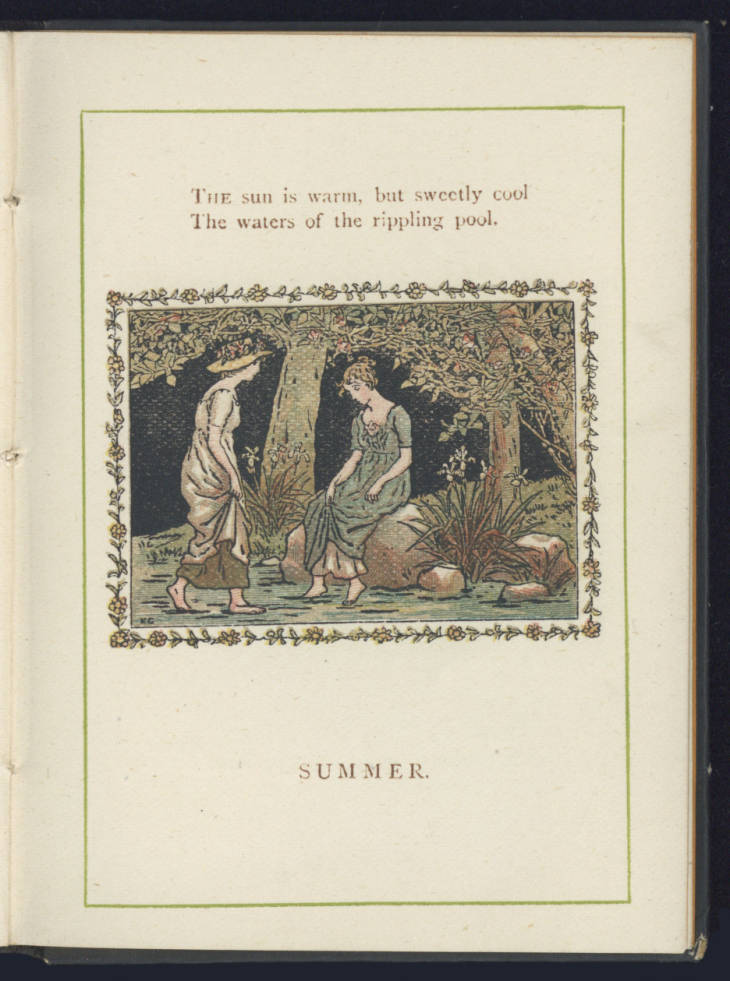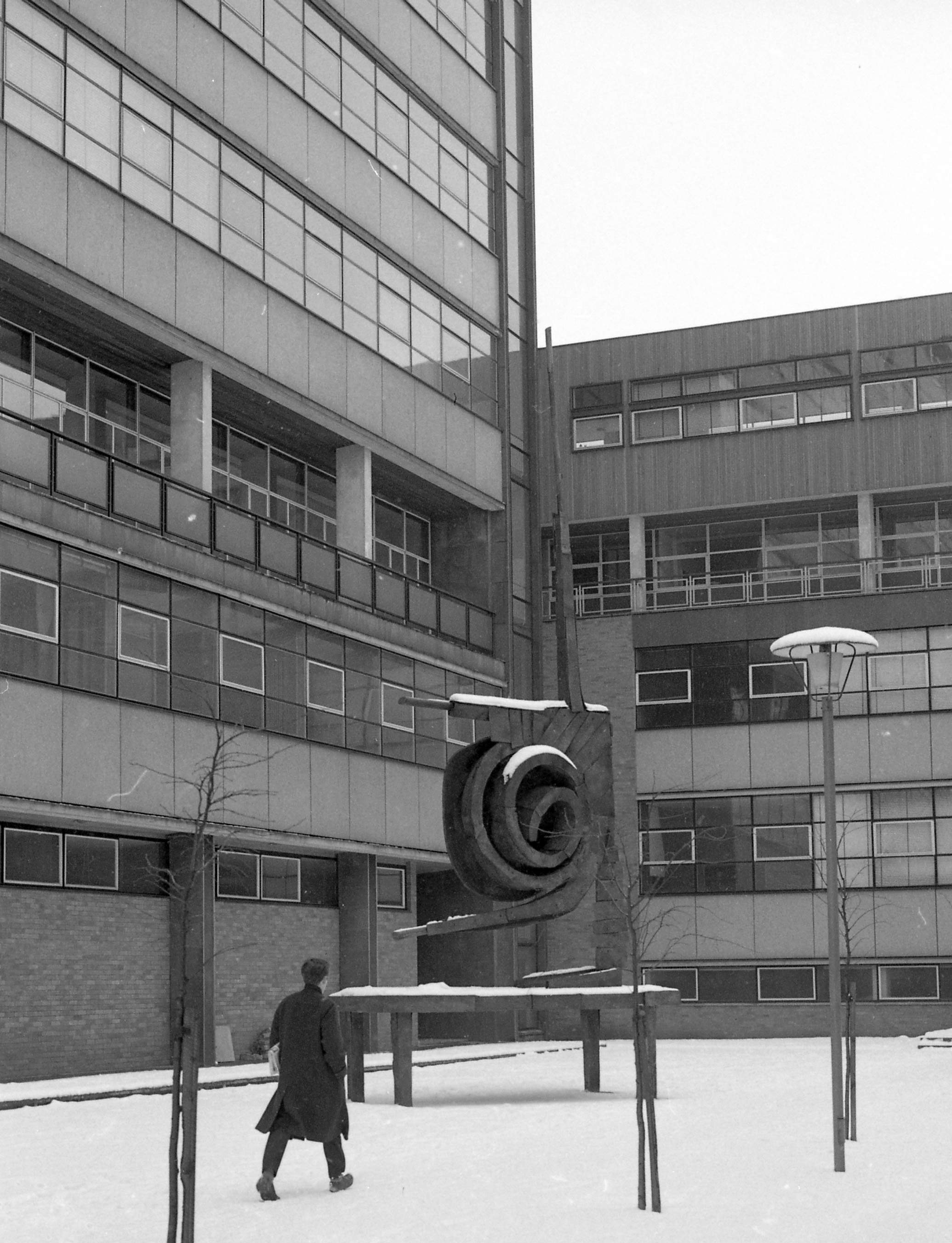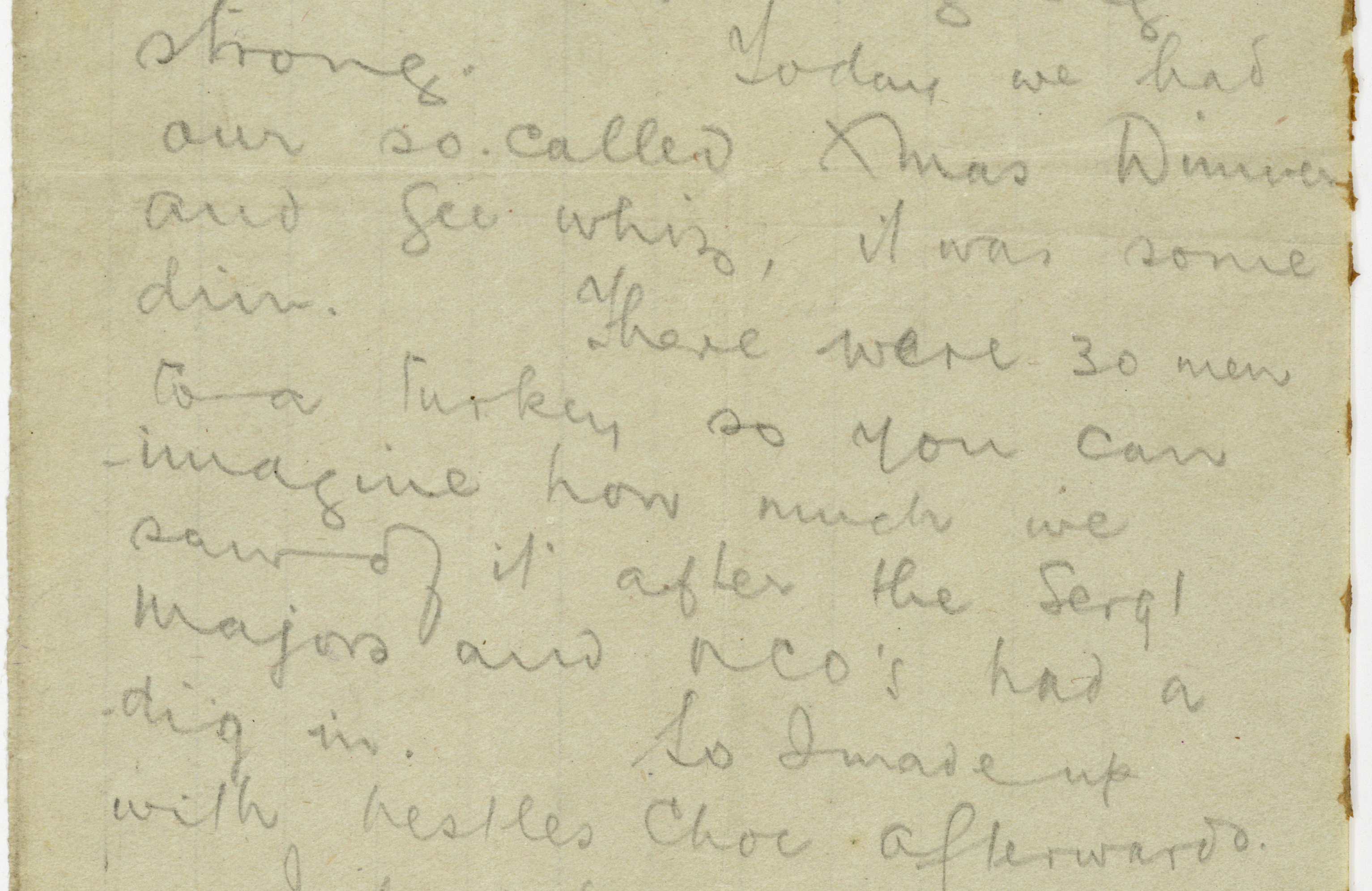
Letter from Thomas Baker Brown to his father, 29th Dec 1917 (Thomas Baker Brown Archive, TBB/1/1/1/1/248)This letter from Thomas Baker Brown to his father is written from France. He describes his Christmas dinner, and remarks that there were ’30 men to a turkey’. See transcript below…
“29.12.17
My dear Father
Just a few lines to let you know that things are all ok and going strong.
Today we had our so called Xmas diner and gee wiz it was some dinn. There were 30 men to a turkey so you can imagine how much we saw of it after the Sergt Major and the NCOs had a dig in. So I made up with Nestles Choc afterwards.
I don’t know whether I told you that the razor blade (singular) arrived all right.
I’ve had a letter from Mr Drew and he proposed drinking my health this Xmas.
Have just to move so will now pip-pip
Love to all
Your loving son
(SB) – Tommy”
Thomas Baker Brown, born 22nd December 1896, a soldier who fought in World War I. In December 1915, he was serving in the ‘Clerks Platoon’ for the 6th Northumberland Fusiliers at a training camp at Scarcroft School, York. As a soldier, or “tommy”, training would begin with basic physical fitness, drill, march discipline and essential field craft. Tommies would later specialise in a role and Brown received training in bombing, signalling and musketry. He suffered from poor eyesight and was issued with glasses. After failing to be transferred to the Royal Flying Corps, Brown was placed into the signalling section and later drafted to France alongside his brother George, as part of the 2/6th Northumberland Fusiliers, 32nd Division.
By the 1st August 1916, Brown was moved to the 21st Northumberland Fusiliers (2nd Tyneside Scottish 37th Division) and was sent on his first journey to the front line trenches. Later, in March 1917, Brown was awarded the Military Medal for his ‘heroism’ and ‘bravery’.

